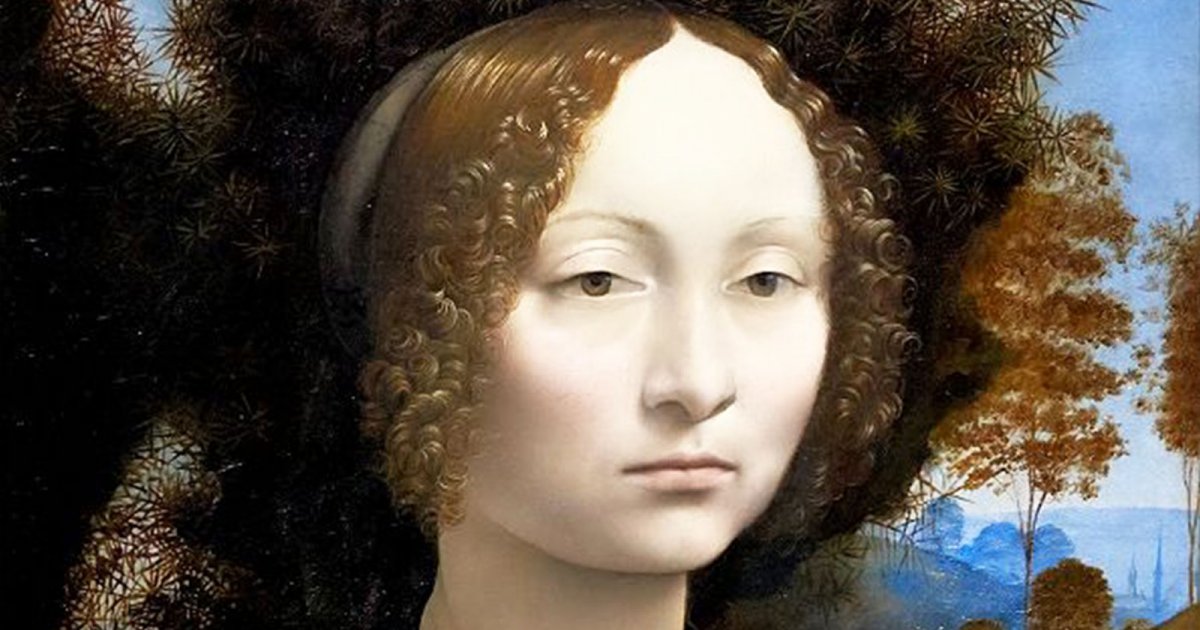NATIONAL GALLERY, Ginevra De Benci By Leonardo Da Vinci
 Language: English / USA
Language: English / USA
This painting is the only one by Leonardo da Vinci, the most famous and well-known artist of the Renaissance, that you can see in the Americas.
It is an oil-on-wood portrait, painted by Leonardo in Florence when he was just 21 years old in 1474, with the glaze technique, where light layers of color are spread over one another in a way that only oil painting allows, because the colors are transparent.
This is a technique that Leonardo learned from the Flemish painters, who he also imitates in terms of his style in this canvas, especially regarding the brightness of her hair and the paleness of her face.
The subject is Ginevra de Benci, the sixteen-year-old daughter of one of Leonardo’s best friends in Florence. The girl’s name is symbolized by the juniper plant, with the Italian name for the plant being pronounced similarly to Ginevra –ginepro.
The back of the painting features an emblem with a juniper sprig in the center, framed by a palm and laurel branch. The palm symbolizes purity, while the laurel symbolizes culture. A motto is written below, VIRTUTEM FORMA DECORAT, beauty adorns virtue, which is dedicated to the young woman.
We know that she was considered to be one of the most cultured and brilliant women of her generation, that she had many suitors, and even poets dedicated sonnets to her. The painting was commissioned from Leonardo by the Venetian Ambassador to Florence, Bernardo Bembo, who–having been rejected by the young woman–wanted a memento to take with him. In fact, the palm and laurel also belong to Bembo’s emblem and infrared examination has allowed us to discover Bembo’s family motto below the one dedicated to young Ginevra.
The work has many similarities with the Mona Lisa, both because the subject is outdoors–a rare thing in those times for a woman– and because, in actual fact, the panel has been cut, due to having been severely damaged over time. The portrait used to also show the lower part of the young woman’s body with her holding her hands.
Interesting fact: an Italian study discovered 50 of Leonardo da Vinci’s anagrams formed with the letters of the motto on the back of this painting, which tell the story of Ginevra de Benci, further confirming the identity of the subject.



